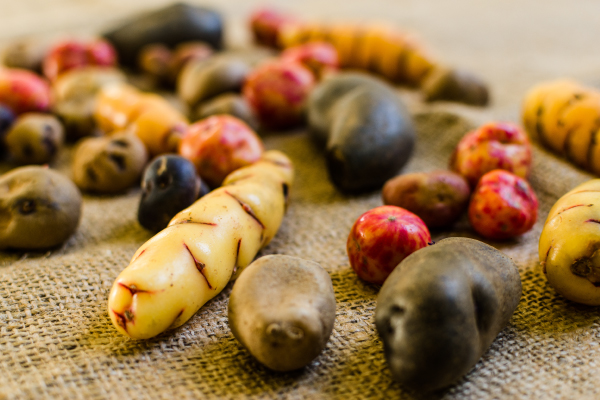Don’t take them for granite!
A.A. Milne once said, “If a man really likes potatoes, he must be a pretty decent sort of fellow.”
Described as the poor man’s staple, the humble potato has fueled the rise and fall of civilizations and was integral to Eagle County’s early development. The potato plant’s unique structure allows it to thrive in harsh environments where other crops struggle to take root.
The birthplace of the modern potato was amongst towering peaks, 22,000 feet high in the Andean mountains. Around 8,000 years ago, the Incan people invented an ingenious way to domesticate the wild potato, which contained poisonous compounds called solanine and tomatine. These toxins were thought to protect the potato from pests but posed a challenge for human consumption. The Incan people observed that ingesting a small amount of clay along with the potatoes neutralized the poison. Over time, wild potatoes were selectively bred to be less toxic. However, poisonous varieties, valued for their ability to withstand cold, are still sold in Peruvian marketplaces today (along with a bit of clay, of course).
To understand the potato’s success, one needs to get to the root of how potatoes thrive in mountainous environments. As potato plants grow, their leaves photosynthesize sugars which are converted into starch. The starch molecules are transported underground to be safely stored in nutrient-packed tubers. Plants that grow vertically are limited in size by the strength of their stems, but potatoes have gravity on their side. By growing underground, they can become quite heavy without putting too much weight on a fragile stem. The heaviest potato on record weighed a whopping 11 lbs.
In favorable conditions, tubers can sprout entirely new plants and when harvested they provide farmers with a delicious, starch-packed crop. Potatoes are surprisingly high in certain vitamins and nutrients including vitamin C, calcium, fiber, and protein. They can also be stored for long periods of time during long, cold winters. Although not recommended, you could survive for some time off a diet of only potatoes. It is no surprise that their popularity quickly spread across Europe, and from the Andean Mountains all the way to the Rocky Mountains.
During this year’s holiday festivities, try this classic potato recipe from 1915.
Source: https://www.thehenryford.org/explore/recipes-and-cookbooks/recipe/cheese-potatoes/
Potatoes have been grown widely in Eagle County since the early 1900s. The crop thrived in the sandy soil of the Brush Creek and Gypsum Creek valleys where young tubers could easily push through the loose soil. Potatoes are productive even in the dry, high desert because the plants produce more food per unit of water than any other major crop. A journal entry from an Eagle Valley resident in 1904 describes seeing “1,000 acres in potatoes from the view we had up on that high mesa.” The potato was a staple crop, grown for both subsistence and sale.
Potatoes have many incredible benefits, but farming them does have a downside. Potatoes reproduce by vegetative cloning, a process where new crops grow directly from previous generations of tubers. Large crops of genetically identical potatoes are susceptible to the same diseases and can be wiped out by a single blight leading to tragic events like the Irish Potato Famine. Incan farmers seemed to understand this threat and grew hundreds of potato varieties at different elevations. Today there are over 4,000 varieties of edible potato with the greatest diversity still in the Andean region. Honoring indigenous cultivation strategies may just be the way to guarantee healthy crops for years to come. While enjoying this year’s fall potato harvest, it is worth remembering that today’s favorite Thanksgiving side dish was once a mountain town staple.
Resources
https://www.vaildaily.com/news/before-skiing-potato-was-king/
https://www.smithsonianmag.com/history/how-the-potato-changed-the-world-108470605/
https://cipotato.org/potato/how-potato-grows/
https://cipotato.org/potato/nutrition/
Rachel Dorencz is a Community Programs Coordinator at Walking Mountains Science Center. She’ll be spending Thanksgiving eating hefty servings of mashed potatoes with her pet rabbit, Bunbun.









